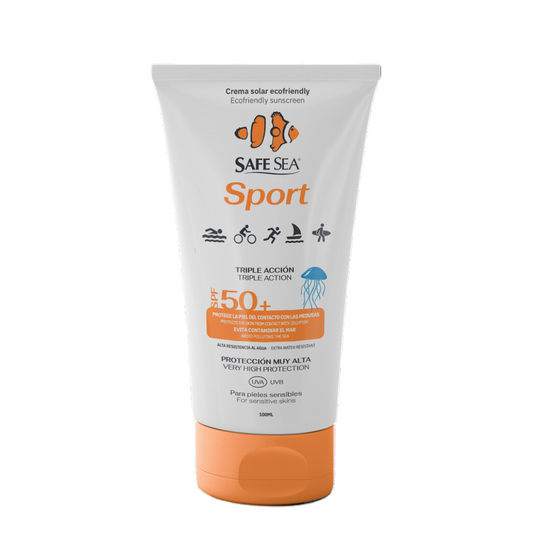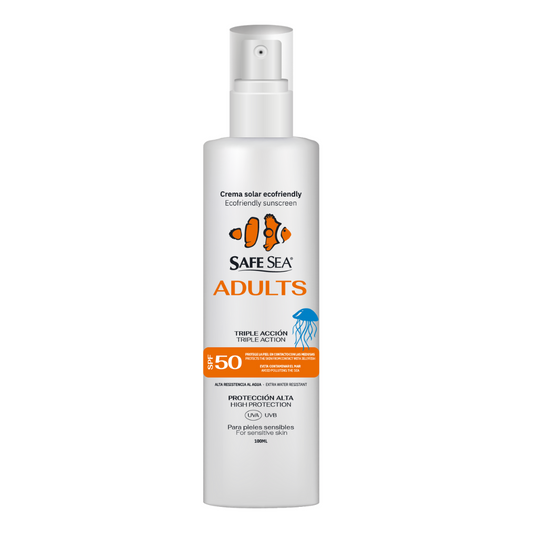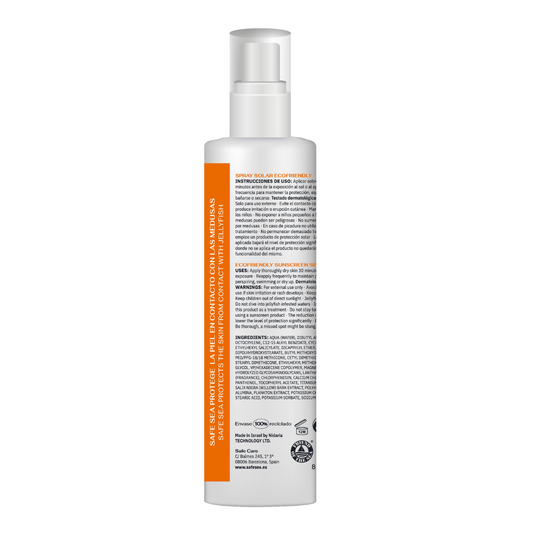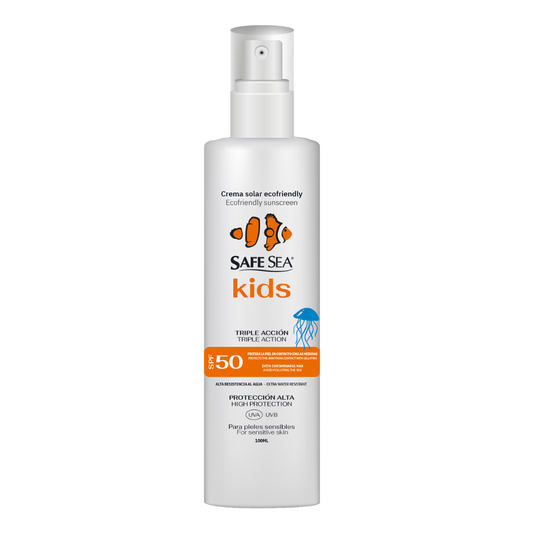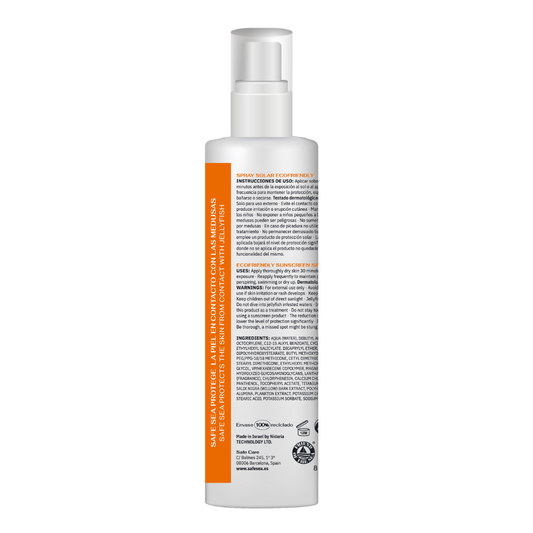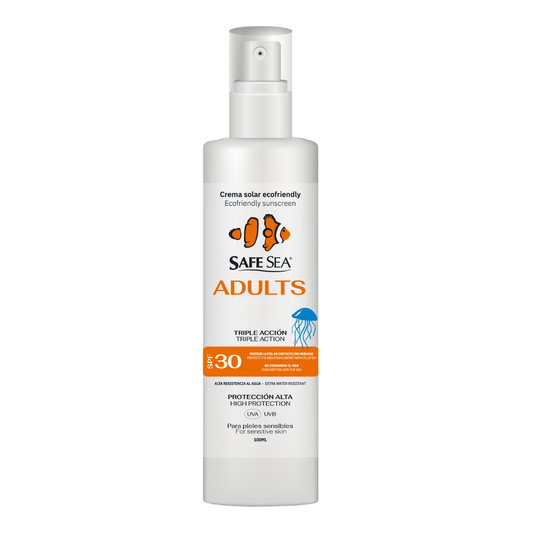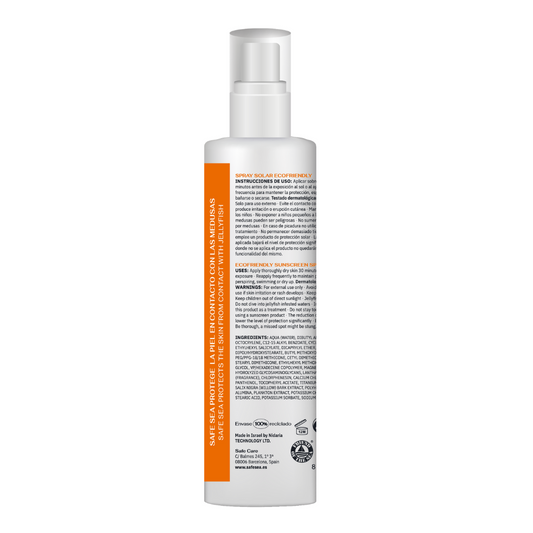We all look forward to swimming in the sea when summer and vacations arrive. However, our marine "little friends", the jellyfish, can quickly ruin our day at the beach. Especially if they sting one of our children. You should know that reactions to jellyfish stings in children are stronger than in the rest of the population, since they are lightweight.
Why do jellyfish sting children?
As we have already commented in previous articles, living waters sting, but they do not attack. They are passive beings that roam open and coastal waters, with no intention of preying. Their tentacles are formed by thousands of stinging cells (nematocysts) that instinctively, at the slightest contact with a foreign body, shoot a toxic poison.
However, this ability to puncture lasts even when they are dead. Sometimes they reach the shore moribund and die there. But this does not mean that they cease to be a danger. Their defense systems are still active. Even if the filaments have broken and separated from the umbrella.
Therefore, we must be aware that if our children are playing on the seashore and when they see a dying jellyfish on the sand they are curious enough to touch it, even though it may seem harmless, they may still be stung. For this reason, it is highly recommended to remind our little ones that they should not touch a jellyfish either in or out of the water.
What to do (and what not to do) if a jellyfish stings my child?
First of all, stay calm. We are aware that jellyfish stings in children cause tension and nervousness. But you must act correctly and quickly to reduce their effects. We advise you to look for the nearest Red Cross aid station , so they can check the wound and start the treatment to follow. The process will vary depending on the species of jellyfish that has stung you. If you want to know what to do in each case, pay attention. We explain you step by step, how to cure the stings of the most common jellyfish species in the Mediterranean: Pelagia nocticula, Chysaora hysoscella, Carybdea Marsupialis, Olindias Posphorica and Physalia Physalis.
Before you consult these specifications against stings from live water, we already tell you that if your child is stung by a jellyfish, you should not rub the affected area with towels or other clothing to prevent more venom from penetrating. Remove from the skin, with tweezers, the remains of the tentacles and wash the wound with salt water.
Although different treatments are required to cure jellyfish stings in children, there are myths that you should avoid following at all costs. Popularly, home remedies have become known, which not only do not help to lessen the reactions of the sting, but can actually make them worse. Here we explain the most frequent and crazy fables.

Myths to cure jellyfish stings to your child
- Urinating on the sting: When a jellyfish stings, it leaves subcellular organelles called nematocysts on the skin, which are able to continue releasing venom even when they have already detached from the animal. Any change or pressure they receive can increase their activity. And urine is one such change; it has neither the same salinity nor the same temperature as seawater. Nothing better to illustrate how far the remedies and myths of the jellyfish sting can go than to laugh for a few minutes with this mythical scene from Friends. Do you remember it? Monica gets stung by a jellyfish and Joey and Chandler explain with great embarrassment what they thought of doing... Put yourself in the worst case scenario, and you'll get it right.
- Apply vinegar: while for the sting of some jellyfish such as Carybdeamarsupialis or Olindias phosphorica it may be useful to apply vinegar, may be counterproductive in the case of others such as the killer jellyfish. Therefore, unless we know exactly what our aggressor jellyfish is, the general advice is not to apply vinegar.
- Use pressure bandages: the wound will need to be kept in the open air. It is therefore not advisable to cover it with a bandage that squeezes it.
How to avoid jellyfish stings in children?
Although it may seem incredible to you, avoiding jellyfish stings in children is very easy. We can't find a better phrase to explain it to you than this: "Prevention is better than cure". Our sunscreens also act as a jellyfish cream. They protect the skin in contact with jellyfish and prevent their sting.
We remind you: pain. Intense itching. Redness. Inflammation. Erythema. Ulceration. Necrosis. These are some of the symptoms you can avoid. If your child has been stung by a jellyfish and you don't want to relive the experience, we encourage you to take a look at our anti jellyfish sun creams for babies and children.


